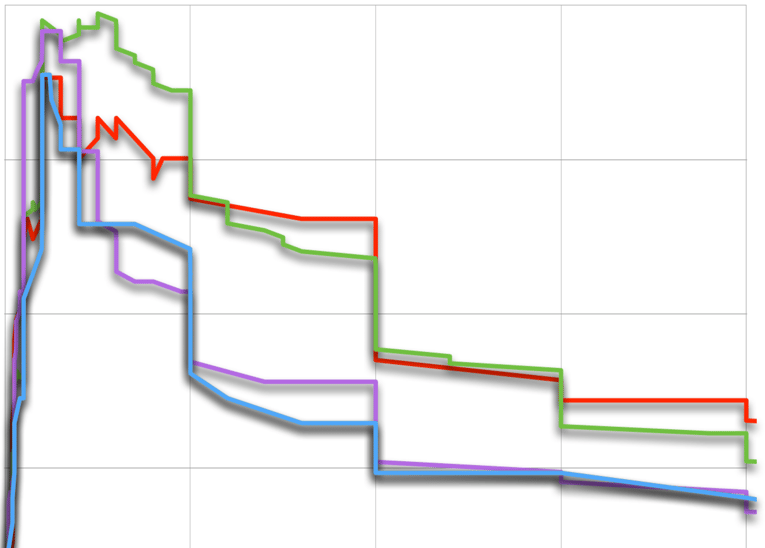Pricing a New Product: The Essential Steps to Getting it Right
 PriceBeam
·
4 minute read
PriceBeam
·
4 minute read

Despite spending millions on product development, firms consistently set their new product price too low, and it can be costly both in the short and long run. According to a survey by McKinsey & Co, 80 to 90 percent of all pricing errors in start-ups are prices set too low.
Your new product pricing acts as a valuation you present to your market, and as its maker you’re expected to make this valuation accurately. So if you launch your new product at a low price to penetrate the market, you’re essentially telling your customers that this is how much you think your product’s benefits are worth to your customer. And that sticks!
Often, we see new startups launching their products at a very low price while assuring tremendous value. They want to offer much more for much less to truly stand out from the competition. Even if it were true, this approach is problematic as it just doesn’t seem credible. At this early stage, the perceived risk of purchasing your product is very high as you don’t have an established brand yet. Your customers don’t know if you can actually deliver the value you promise, and offering incredible value at a very low price raises some red flags. In other words, your price does not reflect your value proposition, which will damage your positioning and interfere with maximizing market share.
First, Understand Your Customers
Very often, it is hard for companies to comprehend the value they offer to customers. Take the manufacturer of high-end doormats who found out that his customers were, in fact, using his mats as prayer rugs without him realising it for a very long time. While this may seem a bit extreme, it highlights the importance of actually talking to your customer - it pays off. That is why Starbucks CEO, Howard Schultz, still visits 25 Starbucks stores each week!
So before doing any price analysis, you need to understand what value your potential customers get from your product. Send out questionnaires with open-ended questions rather than multiple-choice questions, and give them a chance to explain how your product helps them. Read it carefully, really. It’s the best way you can spend your time at this stage.
Define Your Price Range
Prior to deciding on your final release price, you should develop a range within which this price can be set. That is, what is the highest price you can charge and still not exceed the value offered to customers, and what is the lowest price you can charge without making a loss. This will help you understand your product, your cost, and most importantly help you narrow your pricing research (we’ll get to that) and save both time and money.
Identify the Price Ceiling
To find your price ceiling, you need to understand what value your product provides to your customer. Are they saving money by using your product or driving more business? Are they increasing brand equity? Is it saving them time or making processes more convenient? While money saved and revenue gained from using your product can be measured fairly easily, measuring its effects on convenience and brand equity requires you to use market research methods such as conjoint analysis, Van Westendorp or perceptual mapping.
Identify the Price Floor
The price floor is the lowest price you can charge without making a loss. That is, what is the lowest price you can charge without the cost associated with your product are higher than your price? You may think you know your cost, but many companies actually get their true cost wrong. Often, they fail to account for R&D and the full cost of building your brand’s reputation. If you’re speaking at a conference to promote thought leadership, this comes at a cost, too! You spend time that you could have spent elsewhere and may be sharing knowledge that you could have sold to the audience in a whitepaper or a webinar. Your price floor must account for all costs associated with your product, also those that don’t show on your income statement.
Setting your Release Price
Finding your price ceiling and price floor will typically provide you with a fairly wide price range with both price points being infeasible for running a sustainable business. The price range is a tool to help you understand your options and limit the scope for your pricing research, but it doesn’t allow you to pick a price at random. For sustainability and strategic purposes, you want to find the price that maximizes profit.
You have your price range and you understand your customers’ value drivers. It’s time to do pricing research on the segments within your price range: that is, measuring the willingness-to-pay and size of the various customer segments within your price range just as with your price ceiling. You can try doing it yourself - there are various tutorials on the web that explain simple versions of the above-mentioned pricing research methods (i.e. conjoint and Van Westendorp) that can help you get closer to the right price for your product. However, these methods are, indeed, simplified and even with a slight inaccuracy of 1%, you will lose out on substantial profits (10% for the average firm). Pricing research firms use more advanced versions that eliminate inaccuracy so if you want to make sure your pricing is 100% optimized, you should strongly consider leaving it to the pros.
Whatever you decide, your end goal is a willingness-to-pay map like this:
Then, you can find the price that will meet your objective: whether it is maximizing profits or market share.
Summary: Now is Not the Time to Cut Corners!
If you set your initial price too low, it is very hard to recover from. It cements your own valuation of the value you provide to customers, and any price increase will tell your customers that they’re now getting the same value at a higher price. On the contrary, if you set your initial price too high, it’s much easier to decrease it later and provide the same value at a lower price. Hopefully, your new product will be on the market for a long time - but your initial price will haunt you if you don’t get it right from the beginning. Resist the temptation to win extra market share at the expense of long-term profitability.
.png?width=400&height=100&name=PBLogoTransparent%20(1).png)




